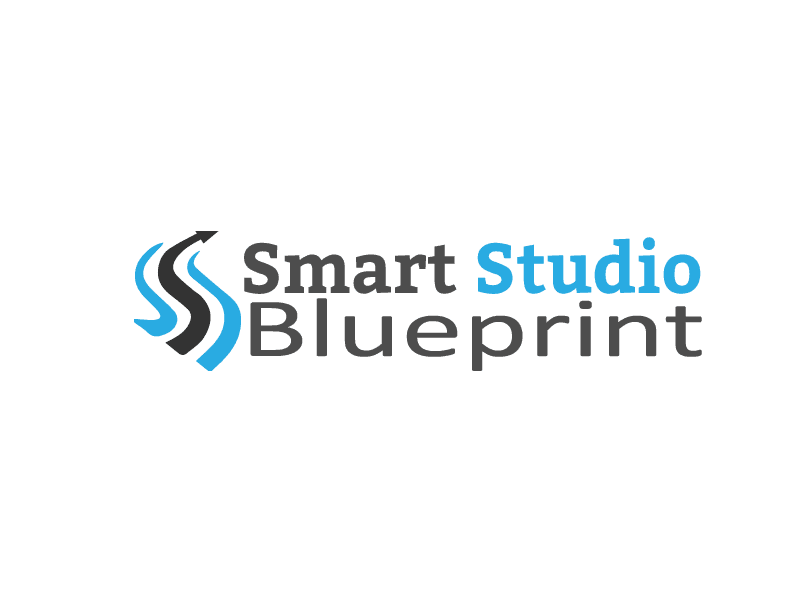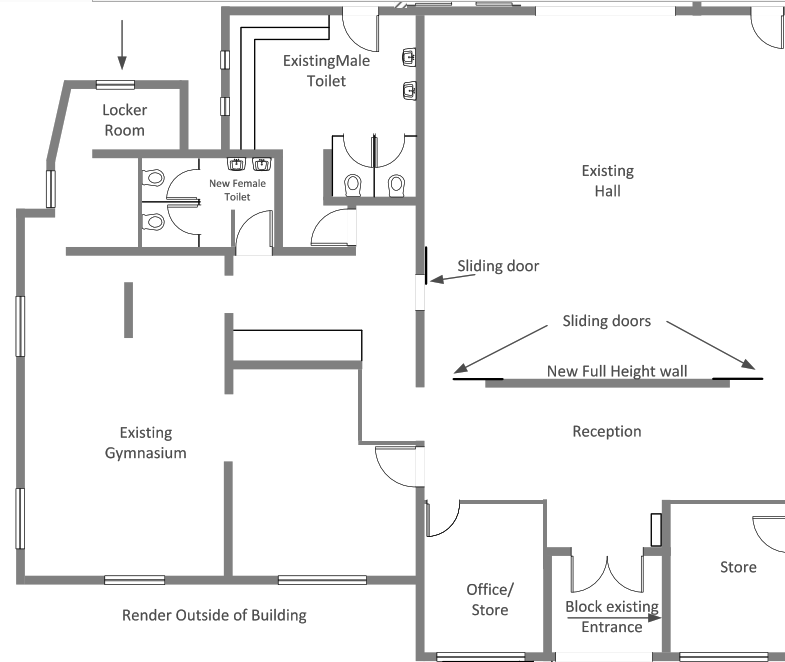Studio Build Out Costs and Projections
Whenever you’re looking at your first studio location or you’re looking to open a new location it’s important to have a solid projection of what everything is going to cost going into it. The reason is that you’ll want to know what your budget should be set at and if the breakeven is going to be worth it. Sometimes, 2 different spaces can vary widely and it’s best to take into account all your one-time and fixed costs before committing to a space. In this post I have laid out for you the top soft and hard costs to calculate before you make the jump...
Choosing a first-time or new location can be both exciting and a little daunting…
Especially since you’re about to lay down a huge investment in time, money, and energy.
That’s why it’s crucial you do your homework before committing to a new space that will require you to complete a build-out, fitout the space, and sign a lease that you’re locked into (see my previous post on lease negotiations).
Today, I’d like to share with you some of my experiences with the hard and soft costs associated with opening a studio and what you can expect. Plus, I’ll hopefully be able to provide you with some real world tips that may just save you 10’s of thousands of dollars… like it has for dozens of my coaching clients who were opening new and multiple location studios/gyms.
Okay, so here we go!
(Keep in mind that all costs are estimate values and they are based on my current 80 sqm fitness floor and about 6m2 changing room, bathroom, , and my 12m2 consultation/trainer office .)
Now, it has to be said that I had a 3 month RENT FREE period that I negotiated into my lease. I signed a 5 year lease, with a 5 year option. So, this meant I had time to build this Studio how I wanted..
However, to attract new clients fast, I needed to show them something bright and shiny (but not expensive!) Something professional and inviting that they could connect with and be attracted to when they walked in those doors.
I also had $30,000 cash up my sleeve from my investor to spend on the Fitout (minus the 3 months rent to get my through the first little period). So, $26,100 to use on the fitout plus equipment. It was going to be tight but I knew I could at least start something. It ended up being $30K I spent, but I had that extra money from sessions I was doing outside.
The Hard Costs
Hard costs involve anything that are actual construction costs (e.g. plumbing, framing, trim). They are also typically upfront, one time only charges. Of course you can finance the costs with a bank loan, through a finance broker or on credit cards (if accepted) if you don’t want to pay out the cash up front.
I paid for all of my build out costs upfront from independent contractors.
I needed to know ahead of time what all my hard costs would be to make sure I had the money to build out my space.
Keep in mind that some spaces are delivered as a “shell” (no walls, etc.) and you have the ability to easily construct a space. With my location, however, it was an old female change room of a bowling club, it had walls everywhere... I had to have the whole place demolished… and since I was on a budget (and love smashing stuff!) I did a lot of the demo myself. I had some buddies help me too which helped :)
Also, after I got quotes from the electrician, construction contractors, painters, and plumber, I asked them if they could give me a discount if I paid in cash. Every single one of them knocked off 10-20% of the original quote (I didn’t have time to shop prices around).
That’s a huge saving!
Plus, it doesn’t cost you anything to go to the bank and take out the money in cash instead of transferring it…
Okay, so here’s what I had to have done in my studio (hard costs) and what you may have to deal with as well jut to get it up and running:
1. Took down 3 walls
2. Built out trainer’s office/consultation/massage room (built a new wall and door access)
3. Removed old vanity units and patched walls
4. Removed carpet and polished the floorboards
5.Had 16 downlights added in (there were fluros before and they were old and tacky)
6. 2 x new TV's
7. Installed mirrors on one side on Fitness Wall
8. Had 6 electrical outlets put in
9. Had cable wire outlets put in for phone and internet
10. Painted walls, ceiling, doors, trim… everything
11. Had shelves built in to hold small equipment pieces and another set for our
client’s bags (cubby holes)
12. Gym flooring (15mm x 40m2)
Actual Hard Costs
· The construction basically added up to $5,000
·The electrical cost was about $1,500
·The plumbing was $500
·The painting (done by friends and family) cost about $500
·The flooring was $1,800
· I would say the total hard costs were around $10,000
Your costs would vary greatly depending on the amount of construction (or demo) you would need to do . I know some PTs who don’t have to do a thing except put in flooring since they are given an empty space in a warehouse to move right into. This would, of course, save you about $8,000 unless you had a larger space and need more flooring…
On the flip side, your build out costs may be more if you have a larger area to work on or more involved electrical or plumbing (like a shower, sinks, etc.). I built my showers in later, when I had more money!
Soft Costs
Soft costs are everything else besides the contractor work (furniture, equipment, overheads, etc.)
These are what the majority of my soft costs involved :
1. 2 x Treadmills, 1 x X-Trainer, 1 x Upright Bike
2. 1 x 1-10kg Dumbell's with rack, 12.5-25kg Dumbells with rack
3. Gym mats & other small equipment items
4. 1 x Desk
5. 2 filing cabinets
6. Posters, plants, art, books, etc
7. Compact refrigerator
8. Water cooler
9. Mini table to hold magazines and radio
10. iPod, AM/FM Radio
11. 1 Laptop for reception area
12. Printer
13. Office supplies (paper, pens, other stationary)
14. Phone
15. Bookshelves
16. 2 x Whiteboards, A-frame
(I will be providing a full equipment list detailing EVERY piece of equipment I have in my studio, and what I use for outdoor training too.
All of the equipment combined was about 20K, but to be honest about 12K was just from 2 treadmills. There are some things you just have to have and will spend the money and the Treadmills were my big purchase..I still have them today, 15 years later!
(I did wait on some additional kettlebells and some smaller pieces
of functional equipment until about 12 months after opening…)
Since I don’t like carrying debt and I had sold out of sessions at my studio in 12 months and was now profitable I just paid back my investor his $30k (keeping some money always in reserve so that I could live) and then developing the studio further and further.
So, as I said earlier although there are hundreds of ways to fit-out a studio and many different ways to train clients there are certain costs that are unavoidable – which is fine as long as you account for them ahead of time and plan them into your budget.
Another thing to keep in mind when doing your build out is the timing of your ordering:
1. I ordered all the equipment that would take 2-3 weeks to ship right when I signed the lease.
2. I waited until 1-2 weeks out to order the smaller furniture since it gets there fast
3. The construction should be done first (demo + build out)
4. The plumbing should be done next in most cases…
5. The electrical can go in once the finished walls and ceilings are going up – usually at the same time since they need to work around the studs and framework
6. After the floors are in and the walls are up and the build out is complete you can have them put the rubber flooring down
7. After everything is complete, then you can paint (However, I like to paint right before the rubber flooring goes down since I don’t have to lay down drop cloths or care about spilling paint – if you’re doing the painting yourself.)
8. Now it’s time to move in all your furniture and equipment
9. Add some decorative touches and stock the office and bathroom/shower supplies
10. For finishing touches I would letter your windows and main door with your company name, hours, contact website, phone number, and logo.
11. Put the A Frame outside and start bringing in business!
Alright, so hopefully all of the actual timelines, costs, and projections I listed above will serve as a helpful checklist for when you go to open your first or new studio. It will also be useful if you are thinking about making any changes or even expanding your current location.
Yours in Fitness Business Success,



